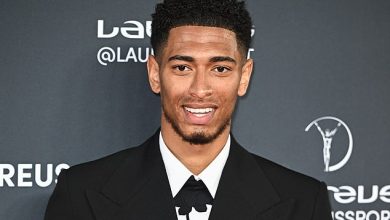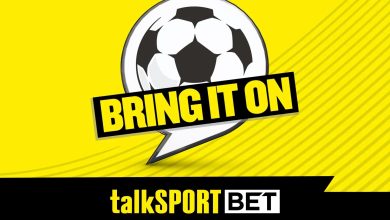NCAA Board of Governors Approves Terms of Multibillion Settlement in House v. NCAA Class Action Lawsuit: Sources


By Chris Vannini, Nicole Auerbach and Justin Williams
The NCAA Board of Governors voted Wednesday to approve the terms of what is expected to be a multibillion-dollar settlement in the House v. NCAA class action lawsuit, as did the Big Ten presidents and chancellors, sources confirmed informed of each decision. Athleticism. The Board of Governors is the highest governing body of the NCAA. This comes a day after leaders of the Big 12 and ACC did the same. This is another step toward finalizing a settlement in this landmark case that has the potential to reshape the business model of college sports. The other power conferences are also expected to vote this week.
Details of the settlement are expected to include more than $2.7 billion in damages the NCAA will owe former Division I athletes, as well as a future revenue-sharing model between power conference schools and athletes , according to sources informed of the negotiations. The damages, made available to Division I athletes since 2016 as back pay for lost name, image and likeness (NIL) earning opportunities, would likely be paid over a 10-year period via a combination of NCAA reserve funds and discounts. in future revenue distributions to conferences.
The damages payment model being voted on is a slightly modified version of the original breakdown proposed by the NCAA, said a university administrator briefed on the proposal. Athleticism, in which the NCAA would have to cover about $1.1 billion in damages, and the power conferences would be responsible for about 40 percent of the remaining damages. This is despite internal dissension within the NCAA in recent days, as smaller, non-FBS Division I conferences have argued that the proposed funding plan places a disproportionate financial liability on them.
Revenue sharing would be an optional model for power conference programs, potentially as early as next year, in which 22 percent of those schools’ average annual revenues — or about $20 million a year — would be distributable directly to athletes .
If finalized, a process that will take several months, the regulations would constitute the next and most significant overhaul of the long-standing framework for amateurism in college sports.
GO FURTHER
How does the House v. NCAA Could Reshape College Sports: What You Need to Know
“The most important part of the settlement – and let’s face it, there’s still a lot of work to do – is that it creates some clarity and visibility on a whole bunch of issues that have been bothering everyone since some time. said NCAA President Charlie Baker last week at the ACC spring meetings. “The other thing it does is create predictability and stability for schools. This creates a tremendous opportunity for student-athletes.
Once the NCAA and power conferences agree on terms and both sides in the case sign, the settlement will be submitted to Judge Claudia Wilken of the U.S. District Court for the Northern District of California for preliminary approval. If granted, there will be a defined period of approximately 90 days during which those in the retroactive damages category will have the opportunity to opt out, and those in the future revenue sharing category will be able to object under the terms of the agreement. This is followed by a final approval hearing, during which, if the judge approves, the settlement officially goes into effect.
House v. NCAA was filed in 2020 before Judge Wilken, the same judge who notably ruled against the NCAA in the O’Bannon and Alston trials. Grant House, a former Arizona State swimmer, and Sedona Prince, a former Oregon and current TCU women’s basketball player, are the two named plaintiffs, represented by lead attorneys Steve Berman and Jeffrey Kessler.
It is essentially a trial in two parts: one looking to the past, the other looking to the future. The first part seeks zero retroactive damages prior to the NCAA’s summer 2021 policy change, while the second seeks an injunction that would force the NCAA and power conferences to lift rules blocking revenue sharing from broadcast rights.

GO FURTHER
How college sports leaders came to talk about a historic settlement
In November, Wilken granted class-action certification for the damages portion of House’s case, extending it to any Division I athlete as early as 2016, under a four-year statute of limitations. This has exponentially increased the potential cost of damages in this case, which is scheduled for trial in January 2025.
Although a settlement would result in significant changes to college sports and for the NCAA, an organization that has long resisted compensating athletes, the NCAA has incentives to avoid taking the case to court. If the NCAA loses at trial, it could have to pay damages of up to $20 billion, according to documents obtained by Yahoo Sports that have been circulating among power conference presidents and administrators, an amount that would have to be paid immediately and could force the NCAA to declare bankruptcy. A loss at trial would also eliminate any existing constraints on NIL and revenue sharing going forward.
“So essentially, if we win, there will be a completely free market in NIL, including with respect to broadcast payments,” Kessler said.
A settlement would give the NCAA more information about payment structures for damages and revenue sharing, as well as some safeguards against further legal battles. Resolving the House case would resolve Hubbard v. NCAA and Carter v. NCAA, two other high-profile antitrust suits in which the plaintiffs are represented by Berman and Kessler in the Northern District of California, and would prevent any additional antitrust claims over the next decade. , according to sources briefed on the settlement negotiations. This is considered an important aspect of the settlement terms for the NCAA, which has faced numerous legal challenges in recent years.
Newly configured roster limits for power conference sports are also expected as part of the settlement, with specific purse numbers to be decided collectively by those leagues in the coming months.
Lingering questions also remain beyond the settlement about the role of Title IX in future revenue sharing, the future of third-party NIL collectives, and the ongoing debate over unionization efforts and employment status.
Required reading
(Photo: Mitchell Layton/Getty Images)
News Source : www.nytimes.com
Gn sports





